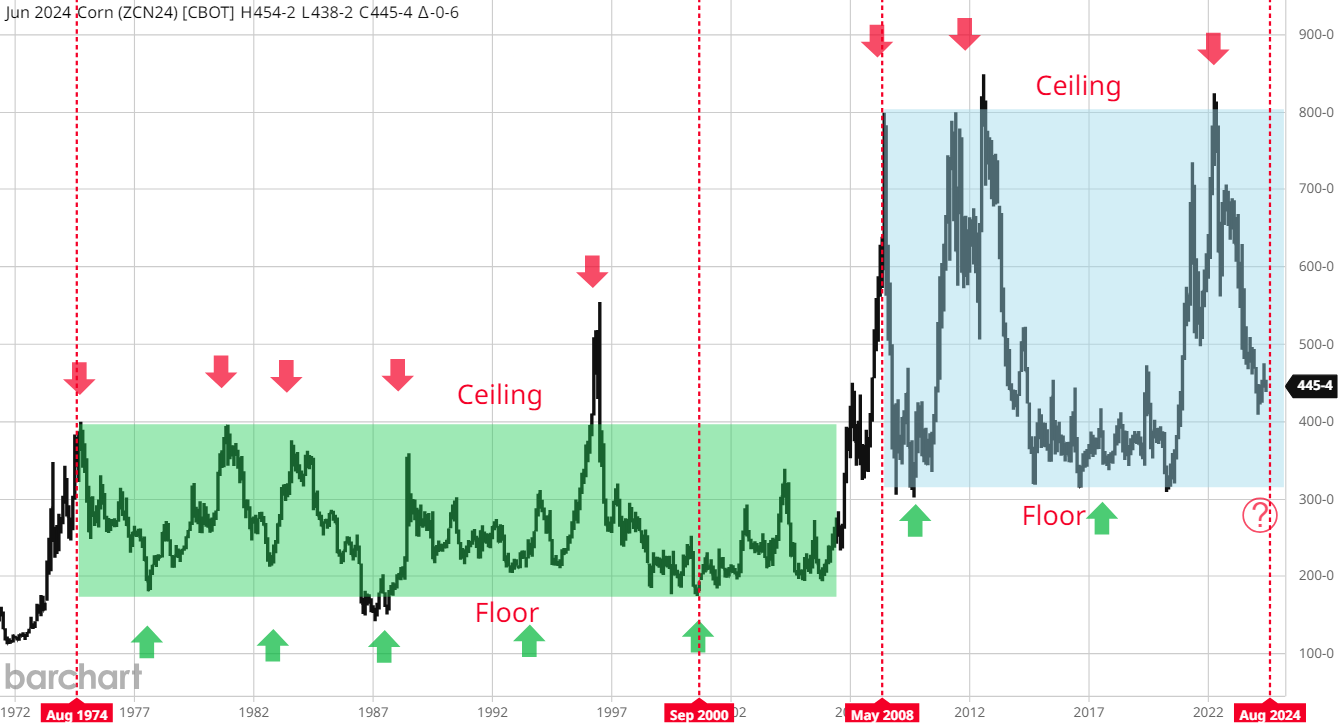
When it comes to trading commodities like corn, understanding market data is crucial. One of the most useful tools for traders is Barchart data, which provides in-depth and real-time insights into the corn market. In this comprehensive guide, we’ll explore what Barchart corn data is, how it works, and how traders can use it to make informed decisions. If you’re looking to gain an edge in the corn market, understanding Barchart corn data is a key step.
What is Barchart Corn Data?
Barchart corn data refers to the detailed market data and charts provided by Barchart.com, a leading provider of financial data, trading platforms, and analysis tools. Barchart offers real-time information on commodity markets, including corn. This data can include price movements, historical trends, futures, and options prices, as well as other technical indicators that traders use to make predictions.
The corn market is one of the most traded agricultural commodities in the world, and it can be highly volatile due to factors like weather, supply and demand, and geopolitical influences. Barchart corn data allows traders to track these fluctuations and make data-driven decisions.
Types of Barchart Corn Data
Barchart provides various types of corn data, each serving a unique purpose for traders:
- Corn Futures Data: Futures contracts allow traders to agree to buy or sell corn at a predetermined price at a future date. Barchart corn futures data shows the current price of these contracts, helping traders assess future market expectations.
- Corn Options Data: Similar to futures, corn options provide the right but not the obligation to buy or sell corn at a specific price. Barchart corn options data gives insights into the premiums for options contracts and can help traders manage risk.
- Spot Prices: Spot prices refer to the current market price of corn for immediate delivery. Barchart provides real-time spot prices that can help traders gauge the market’s current state.
- Historical Data: Historical corn data allows traders to analyze past price trends. Barchart provides historical corn prices, which can be crucial for understanding long-term market movements and making predictions.
- Technical Indicators: Barchart corn data also includes various technical indicators like moving averages, Relative Strength Index (RSI), and Bollinger Bands. These indicators help traders identify trends and potential buy or sell signals.
How to Read Barchart Corn Data
Understanding how to read Barchart corn data is essential for traders looking to maximize their chances of success in the market. Here’s how to interpret some of the most important components:
1. Price Charts
Barchart provides interactive price charts for corn, allowing traders to view real-time price movements over different timeframes. These charts display the opening price, closing price, high, and low for each trading session. Traders use these charts to identify trends and price patterns that could indicate a potential market direction.
2. Volume and Open Interest
Volume represents the total number of contracts traded during a particular time period, while open interest refers to the total number of outstanding contracts. Barchart corn data includes both of these metrics, which help traders assess market liquidity and the strength of a trend. A rising volume combined with increasing open interest might indicate that the market trend is gaining momentum.
3. Moving Averages
Moving averages smooth out price data to identify trends. The most commonly used types of moving averages are the Simple Moving Average (SMA) and the Exponential Moving Average (EMA). Barchart corn data often displays these moving averages, which help traders determine whether the market is in an uptrend or downtrend.
4. Support and Resistance Levels
Support and resistance levels are key concepts in technical analysis. Support refers to a price level where demand is strong enough to prevent further price declines, while resistance is a price level where selling pressure is sufficient to stop price increases. By analyzing Barchart corn data, traders can identify these levels and use them to set entry and exit points.
The Importance of Barchart Corn Data for Traders
Barchart corn data is an essential tool for traders looking to make informed decisions in the corn market. Below are several reasons why Barchart corn data is vital for successful trading:
- Real-Time Data: Barchart provides real-time data, allowing traders to stay on top of the latest market movements. Since the corn market can change rapidly, having up-to-the-minute information is crucial.
- Comprehensive Analysis: The data provided by Barchart includes not only price information but also technical indicators, market sentiment, and historical data. This allows traders to analyze the corn market from multiple angles and make better decisions.
- Risk Management: By understanding price trends and patterns, traders can develop more effective risk management strategies. Barchart corn data helps traders identify potential risks and adjust their positions accordingly.
- Market Forecasting: With historical data, traders can identify recurring patterns and trends, which can help predict future price movements. While no prediction is guaranteed, historical data is a valuable tool for forecasting market conditions.
- Identifying Opportunities: Barchart corn data helps traders identify profitable trading opportunities, such as breakout patterns, overbought or oversold conditions, and trend reversals. By staying informed, traders can act quickly when opportunities arise.
How Traders Use Barchart Corn Data
Traders use Barchart corn data in a variety of ways to inform their strategies:
- Futures Trading: Many traders use Barchart corn data to track corn futures prices and trade accordingly. By analyzing market trends and indicators, traders can predict the future direction of corn prices and enter or exit trades at the right time.
- Options Trading: Barchart corn data is also useful for options traders, as it provides insights into option premiums and price movements. By analyzing the data, traders can identify potential buy or sell signals for corn options.
- Technical Analysis: Traders who rely on technical analysis can use Barchart corn data to study price charts, moving averages, and other indicators. This helps them identify trends, breakouts, and other key market signals.
- Risk Management: Traders can use Barchart corn data to set stop-loss orders, manage their position sizes, and avoid unnecessary risks. By understanding market volatility and price patterns, traders can make smarter decisions and reduce their exposure.
- Market Monitoring: For many traders, Barchart corn data is a valuable tool for ongoing market monitoring. By keeping track of price movements, volume, and other metrics, traders can stay informed about changes in the corn market and adjust their strategies accordingly.
Tips for Using Barchart Corn Data Effectively

Here are some tips to help you make the most of Barchart corn data:
- Stay Updated: The corn market can change rapidly, so it’s important to stay updated with real-time Barchart corn data.
- Combine Data Sources: While Barchart corn data is highly valuable, it’s also important to combine it with other data sources, such as weather reports and economic news, to gain a fuller picture of the market.
- Focus on Key Indicators: Instead of getting overwhelmed by all the data, focus on the key indicators that are most relevant to your trading strategy, such as moving averages, volume, and support/resistance levels.
- Develop a Trading Plan: Use Barchart corn data to inform your trading plan, which should include risk management rules and clear entry and exit strategies.
- Practice Patience: It’s easy to get caught up in market noise, but using Barchart corn data effectively requires patience. Take the time to analyze the data thoroughly before making trades.
Conclusion
Understanding Barchart corn data is crucial for traders looking to succeed in the corn market. With its comprehensive and real-time information, Barchart provides traders with the tools they need to make informed decisions. By learning how to read and analyze this data, traders can identify trends, manage risks, and find profitable opportunities in the corn market. Whether you’re new to trading or an experienced professional, Barchart corn data can help take your trading to the next level.
FAQs
What is Barchart corn data?
Barchart corn data refers to real-time and historical market data, including price movements, futures contracts, and technical indicators, provided by Barchart.com for the corn market.
How can I use Barchart corn data for trading?
Traders use Barchart corn data to analyze market trends, identify entry and exit points, manage risks, and make data-driven decisions for trading corn futures and options.
What types of Barchart corn data are available?
Barchart offers various types of corn data, including corn futures, options data, spot prices, historical data, and technical indicators like moving averages and RSI.
How does Barchart corn data help with market forecasting?
By analyzing historical price trends and technical indicators, traders can use Barchart corn data to identify recurring patterns and predict future price movements.
Why is real-time Barchart corn data important for traders?
Real-time Barchart corn data allows traders to stay updated on market fluctuations and make timely decisions to capitalize on opportunities or manage risks effectively.
You May Also Read: https://livermoreartsup.com/pedrovazpaulo-business-consultant/




